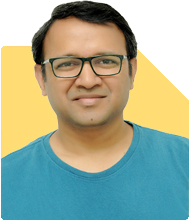Ramalingam Kalirajan |10894 Answers |Ask -Follow
Mutual Funds, Financial Planning Expert - Answered on Apr 20, 2024
He has an MBA in finance from the University of Madras and is a certified financial planner.
He is the director and chief financial planner at Holistic Investment, a Chennai-based firm that offers financial planning and wealth management advice.... more

I am investigating in below mf, is the % allocation good? I also have a few fd for emergencies and one espp (NYSE). I am 34 with have just started investing in mf planning to invest 25-50k pm. Tata India Consumer Fund Direct-Growth - 7% ICICI Prudential Value Discovery Direct-Growth - 8% ICICI Prudential Equity & Debt Fund Direct-Growth - 20% SBI Small Cap Fund Direct-Growth - 10% ICICI Prudential Bluechip Fund Direct-Growth - 25% Quant Active Fund - Growth 10% Quant Small Cap Fund Direct Plan-Growth 10% Quant Mid Cap Fund Direct-Growth 10%
Large-cap Exposure: With 35% allocation to large-cap funds, ensure it aligns with your risk profile and long-term goals.
Mid & Small Cap Exposure: 30% allocation to mid and small-cap funds indicates a higher risk appetite. Review if this aligns with your risk tolerance and financial goals.
Sectoral Exposure: Be cautious with thematic or sectoral funds as they can be more volatile. Consider diversifying into other sectors or categories.
Emergency Fund & ESPP: Ensure your FDs and ESPP serve their purpose and are not affected by market volatility.
Consider rebalancing periodically and aligning your allocation with your risk tolerance, investment horizon, and financial goals. Consulting a financial advisor can provide personalized guidance.
You may like to see similar questions and answers below
Omkeshwar Singh | Answer |Ask -Follow
Head, Rank MF - Answered on Dec 20, 2019
Omkeshwar Singh | Answer |Ask -Follow
Head, Rank MF - Answered on Nov 04, 2022
Milind Vadjikar | Answer |Ask -Follow
Insurance, Stocks, MF, PF Expert - Answered on Oct 11, 2024
Ramalingam Kalirajan |10894 Answers |Ask -Follow
Mutual Funds, Financial Planning Expert - Answered on Apr 03, 2025
Ramalingam Kalirajan |10894 Answers |Ask -Follow
Mutual Funds, Financial Planning Expert - Answered on Apr 23, 2025
Radheshyam Zanwar |6747 Answers |Ask -Follow
MHT-CET, IIT-JEE, NEET-UG Expert - Answered on Dec 16, 2025
Shalini Singh |181 Answers |Ask -Follow
Dating Coach - Answered on Dec 16, 2025
Patrick Dsouza |1429 Answers |Ask -Follow
CAT, XAT, CMAT, CET Expert - Answered on Dec 16, 2025
Nayagam P P |10858 Answers |Ask -Follow
Career Counsellor - Answered on Dec 16, 2025
Nayagam P P |10858 Answers |Ask -Follow
Career Counsellor - Answered on Dec 16, 2025
Samraat Jadhav |2510 Answers |Ask -Follow
Stock Market Expert - Answered on Dec 16, 2025
Samraat Jadhav |2510 Answers |Ask -Follow
Stock Market Expert - Answered on Dec 16, 2025
Nayagam P P |10858 Answers |Ask -Follow
Career Counsellor - Answered on Dec 16, 2025
Nayagam P P |10858 Answers |Ask -Follow
Career Counsellor - Answered on Dec 16, 2025
Ramalingam Kalirajan |10894 Answers |Ask -Follow
Mutual Funds, Financial Planning Expert - Answered on Dec 16, 2025


























